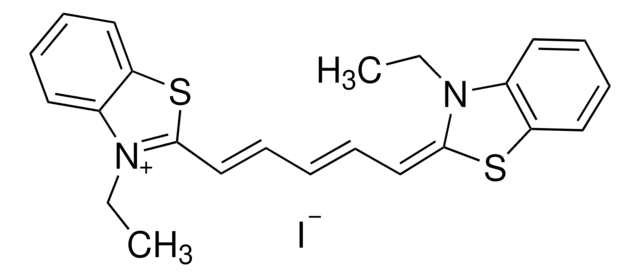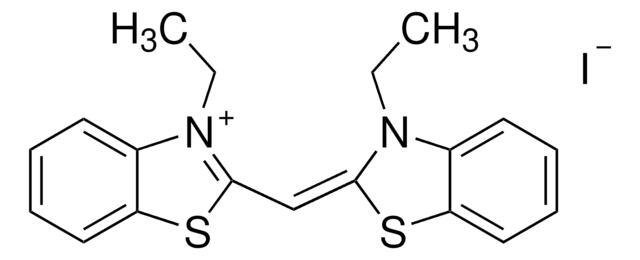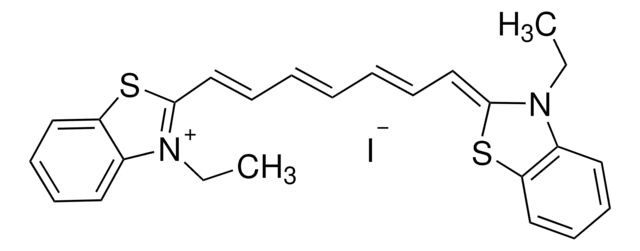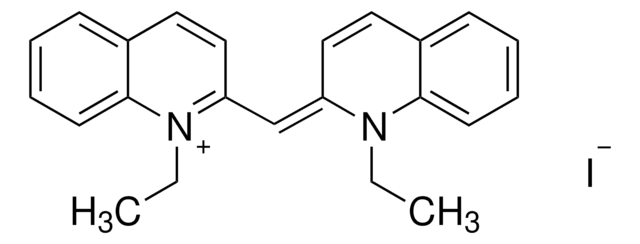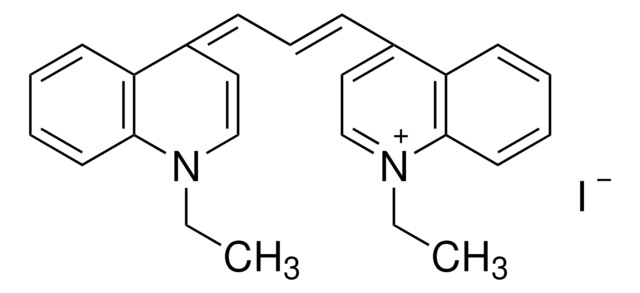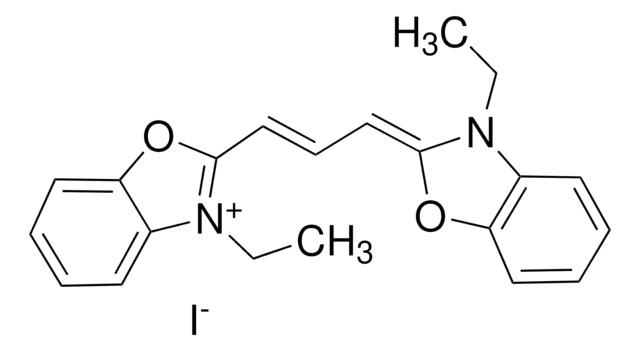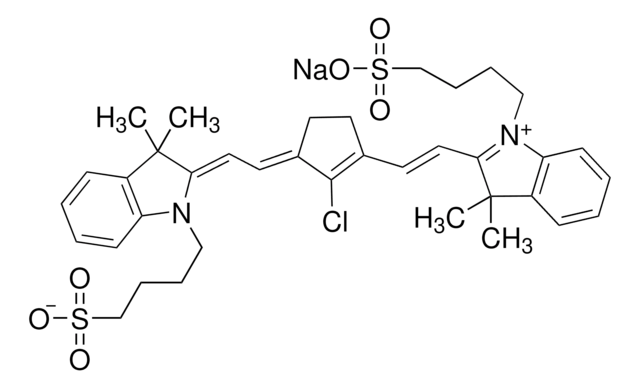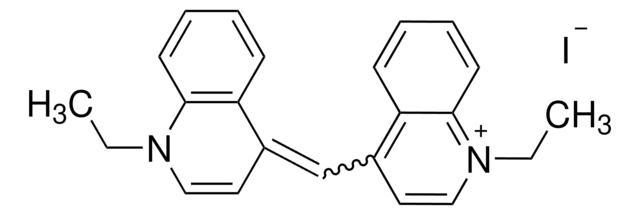おすすめの製品
フォーム
solid
組成
Dye content, 95%
mp
268-270 °C (dec.) (lit.)
λmax
560 nm
SMILES記法
[I-].CCN1\C(Sc2ccccc12)=C\C=C\c3sc4ccccc4[n+]3CC
InChI
1S/C21H21N2S2.HI/c1-3-22-16-10-5-7-12-18(16)24-20(22)14-9-15-21-23(4-2)17-11-6-8-13-19(17)25-21;/h5-15H,3-4H2,1-2H3;1H/q+1;/p-1
InChI Key
VZBILKJHDPEENF-UHFFFAOYSA-M
類似した製品をお探しですか? 訪問 製品比較ガイド
詳細
アプリケーション
シグナルワード
Warning
危険有害性情報
危険有害性の分類
Eye Irrit. 2 - Skin Irrit. 2 - STOT SE 3
ターゲットの組織
Respiratory system
保管分類コード
11 - Combustible Solids
WGK
WGK 3
引火点(°F)
Not applicable
引火点(℃)
Not applicable
個人用保護具 (PPE)
dust mask type N95 (US), Eyeshields, Gloves
適用法令
試験研究用途を考慮した関連法令を主に挙げております。化学物質以外については、一部の情報のみ提供しています。 製品を安全かつ合法的に使用することは、使用者の義務です。最新情報により修正される場合があります。WEBの反映には時間を要することがあるため、適宜SDSをご参照ください。
労働安全衛生法名称等を表示すべき危険物及び有害物
名称等を表示すべき危険物及び有害物
労働安全衛生法名称等を通知すべき危険物及び有害物
名称等を通知すべき危険物及び有害物
Jan Code
173738-1G:4548173986036
173738-VAR:
173738-BULK:
173738-250MG:4548173986043
最新バージョンのいずれかを選択してください:
資料
Developed in the last several years, fluorescence quenching microscopy (FQM) has enabled rapid, inexpensive, and high-fidelity visualization of two-dimensional (2D) materials such as graphene-based sheets and MoS2.
Graphene has emerged as the new wonder material. Being only one atom thick and composed of carbon atoms arranged in a hexagonal honeycomb lattice structure, the interest in this material has exploded exponentially since 2004 when it was first isolated and identified using a very simple method.
ライフサイエンス、有機合成、材料科学、クロマトグラフィー、分析など、あらゆる分野の研究に経験のあるメンバーがおります。.
製品に関するお問い合わせはこちら(テクニカルサービス)